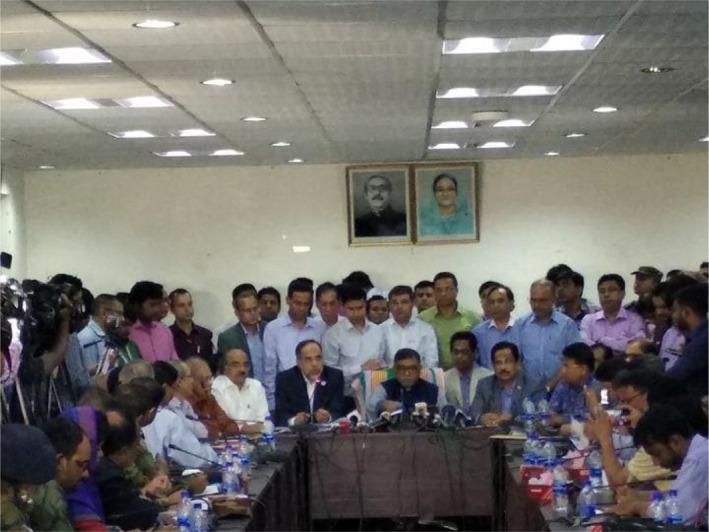In response to the COVID‐19 pandemic, the WHO and other international organizations have instructed countries to follow restrictions to face COVID‐19. Accordingly, some terminologies such as ‘lockdown’, ‘quarantine’, ‘social distance’ and ‘isolation’ came into circulation. In Bangladesh, they were not familiar to most people and, as a result, did not work effectively.
On 25 March, the Bangladesh government declared ‘general holiday’ to prevent ‘social contact’ and the spread of the pandemic. Once this was announced, more than 15 million people hurriedly left major cities to return to their village homes, creating massive crowds travelling by rail, bus and ship. When they reached their respective villages, many started festive gatherings to mark what they considered holidays, leave or vacation. Local police tried to curb them through often cruel actions. Bangladeshis are historically familiar with curfew; to them, words like ‘curfew’, ‘emergency’ or ‘section 144’ are more effective in making them realise the situation rather than completely unfamiliar terms such as ‘lockdown’. Many do not know what ‘quarantine’ is. They just live at home, roaming around the villages. To them, ghorbondi (home confinement) is more convincing than quarantine. One Bangladeshi returnee from abroad was ordered to be quarantined at his home in the capital. Yet, next morning his house attracted people who gathered, curious about how a man ‘quarantines’ himself at his home, having no idea what quarantine was.
Likewise, there is virtually no idea about hygiene or hand washing, or even the immune system. This is particularly so among those who live in the world’s most crowded slums and refugee camps, and who lack such daily essentials as water, let alone hand soap or sanitiser. While informal workers face acute financial crisis to meet their daily basic needs, they have fewer options for maintaining proper hygiene to prevent the disease.
Another crucial lack is of accurate information on the pandemic, testing kits and necessary health facilities. Political leaders are giving largely misleading and misunderstood statements. They are unable to envisage the consequences of the widespread pandemic as well as how best to deal with a population of 165 million – most of whom live in rural areas with little or no education and scare resources. Much more effective in their response are local religious leaders, such as the imam and mawlana, who increasingly guide their fellows to maintain required hygiene. Yet they should do much more, both with regard to hygiene and safe distance. With such ground realities, I suggest that instead of western (exogenous) notions, culturally appropriate local (endogenous) dynamics need to be taken into consideration to face such a pandemic.




